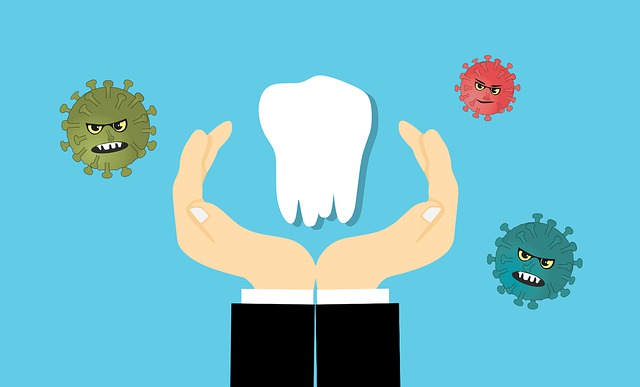An interesting article titled “Selenomonas sputigena acts as a pathobiont mediating spatial structure and biofilm virulence in early childhood caries,” written by Hunyong Cho and et. al. appears in Nature Communications (vol. 14, no. 1, 2023). The article seeks to study if other bacteria besides Streptococcus mutans are involved with tooth decay and cavities in children, also known as dental caries. Prior to the study it was believed that S. mutans and other acid-making bacteria are adequately removed by teeth-brushing and oral care, and this creates a protective biofilm, or plaque, on teeth. If the plaque is left in place for too long, bacteria consumes sugars from food and drinks and coverts them to acidsm which erode the enamel of affected teeth, in time creating cavities.
The article investigated the role of Selenomonas sputigena (S. sputigena) in early cavities in children. S. sputigena is a gram-negative anaerobe that is commonly found in the oral cavity. The study involved researchers taking samples of plaque from the teeth of 300 children aged 3 to 5 years, with half of them having caries, and analyzing the samples. The analysis involved sequencing of bacterial gene activity in the samples, analysis of the biological pathways implied by this bacterial activity, and even direct microscopic imaging. The researchers then validated their findings on a set of 116 plaque samples that was also from 3 to 5 year olds.

This image is from Pixabay and has a Pixabay license
The study found that S. sputigena is able to interact with Streptococcus mutans, the primary pathogen responsible for early childhood caries, to form a honeycomb-like multicellular superstructure as it possesses small appendages allowing it to move across surfaces and these honeycomb-shaped superstructures encapsulate and protect S. mutans. This partnership increases concentration and production of acid, which worsens caries severity. The superstructure provides a protective environment for S. mutans, creating more acid and causing more damage to tooth enamel. S. sputigena is able to promote the growth of other cariogenic bacteria, such as Prevotella salivae and Leptotrichia wadei. It is noted that although S. sputigena is one of several carie linked bacterial species in plaque besides S. mutans, it does not cause caries on its own, and has to partner with S. mutans to boost the caries process. The authors state:
“We show that the interaction between S. sputigena and S. mutans augments the severity of dental caries in the presence of resident microbiota in vivo, suggesting a new pathobiont exacerbating biofilm virulence for a common yet unresolved disease.”
The results showed that S. sputigena is a key bacteria species involved in the development of early childhood caries. This is the first study to show a cavity-causing role the Selenomonas species of bacteria. Prior to this finding it was believed that S. sputigena, associated only with gum disease. Thus potential treatment strategies that target S. sputigena in children could help the prevention of cavities. The authors feel that additonal research is needed to confirm the result and also to develop ways to targeting S. sputigena.
